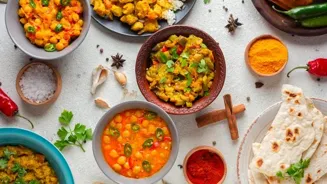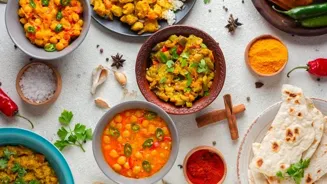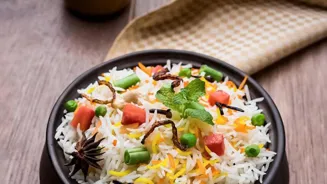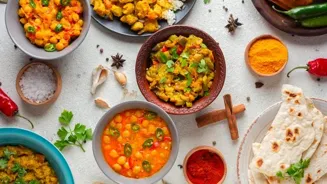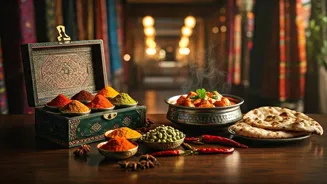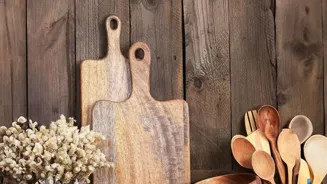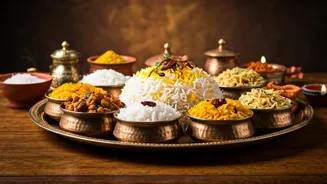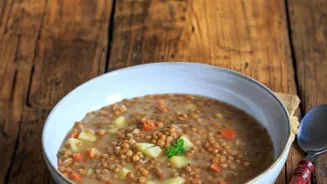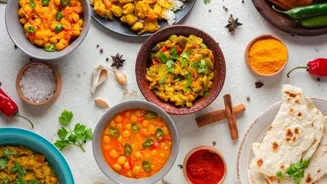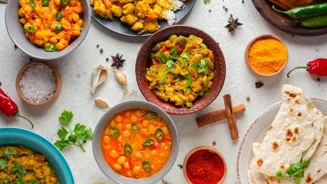Unveiling the art of crafting the perfect samosa! Dive into this step-by-step guide for crispy goodness. Read on for culinary bliss!
Namaste, food lovers! Are you craving that perfect, crispy samosa, the
kind that explodes with flavour in every bite? The samosa, a quintessential Indian snack, is loved across the country and beyond.
Whether it's enjoyed with a cup of chai during monsoon season or served at festive gatherings, the samosa is a treat that always hits the spot. But making the perfect samosa can feel like a daunting task. Fear not!
This step-by-step recipe will guide you through the process, ensuring you achieve crispy perfection every time. From the flakiest crust to the most delicious filling, we've got you covered. So, put on your apron, gather your ingredients, and let's embark on this culinary adventure together.
Get ready to impress your family and friends with your newfound samosa-making skills!
Achieve flaky samosa dough with ghee, ajwain, and patience
Let's start with the crucial element that defines a great samosa: the dough. Achieving that perfect flaky texture is key. In a large bowl, mix together 2 cups of maida (all-purpose flour), 1/4 teaspoon of ajwain (carom seeds), and a pinch of salt.
The ajwain adds a distinct flavour and aids digestion. Now, slowly add 4 tablespoons of ghee (clarified butter) or oil. This is the secret ingredient for creating that layered, crispy crust. Rub the ghee into the flour until the mixture resembles breadcrumbs.
This step ensures the dough is evenly coated and will result in a flaky texture. Next, gradually add water, a little at a time, and knead the mixture into a firm, yet pliable dough. Avoid adding too much water at once, as a sticky dough will not yield crispy samosas.
Once the dough comes together, cover it with a damp cloth and let it rest for at least 30 minutes. This resting period allows the gluten to relax, making the dough easier to roll out and ensuring a tender crust. This patient step is essential for achieving the perfect samosa texture.
After resting, knead the dough lightly again before proceeding.
Customize flavorful potato filling for delicious samosas
Now for the heart of the samosa: the filling. This is where you can get creative and customize the flavours to your liking. For a classic potato filling, boil 2-3 medium-sized potatoes until they are tender. Let them cool, then peel and mash them coarsely. In a pan, heat 1 tablespoon of oil.
Add 1 teaspoon of cumin seeds and let them splutter. Next, add 1 chopped green chili (adjust according to your spice preference), 1/2 teaspoon of grated ginger, and a pinch of asafoetida (hing). Sauté for a minute until fragrant.
Now, add 1/2 cup of peas (fresh or frozen), 1/2 teaspoon of turmeric powder, 1/2 teaspoon of red chili powder (optional), 1 teaspoon of coriander powder, 1/2 teaspoon of garam masala, and salt to taste. Sauté for another minute, then add the mashed potatoes.
Mix everything well, ensuring the spices are evenly distributed. Cook for 2-3 minutes, stirring occasionally. Finally, add 1 tablespoon of chopped coriander leaves and 1/2 teaspoon of amchur (dry mango powder) for a tangy kick. Mix well and remove from heat.
Let the filling cool completely before using it to stuff the samosas. Remember, a well-seasoned filling is essential for a delicious samosa.
Shape samosas by filling and sealing cones with potato filling
Now comes the fun part: shaping the samosas! Divide the rested dough into small, equal-sized balls. Roll out each ball into a thin, oval-shaped disc. Using a knife, cut the disc in half. Take one half and brush the straight edge with water.
Fold the two corners of the straight edge together to form a cone. Press the edges firmly to seal the cone. Make sure there are no gaps, or the filling will leak out during frying. Now, carefully fill the cone with a spoonful of the cooled potato filling.
Do not overfill the cone, as this can make it difficult to seal and may cause the samosa to burst during frying. Once filled, brush the open edges of the cone with water and pinch them together to seal the samosa completely. Ensure the seal is tight and secure.
Repeat this process with the remaining dough and filling. You can experiment with different samosa shapes, such as triangles or crescents, but the cone shape is the most traditional. Remember, practice makes perfect, so don't worry if your first few samosas aren't perfectly shaped.
With a little patience, you'll master the technique in no time.
Fry samosas until golden, serve hot with chutney
The final stage is frying the samosas to golden perfection. Heat oil in a deep frying pan or kadhai over medium heat. The oil should be hot enough to cook the samosas evenly but not so hot that they burn. To test the oil temperature, drop a small piece of dough into the oil.
If it sizzles and rises to the surface slowly, the oil is ready. Gently slide the samosas into the hot oil, a few at a time. Do not overcrowd the pan, as this will lower the oil temperature and result in soggy samosas.
Fry the samosas on medium heat, turning them occasionally, until they are golden brown and crispy on all sides. This usually takes about 8-10 minutes. Keep a close eye on the samosas to prevent them from burning.
Once they are golden brown, remove them from the oil using a slotted spoon and place them on a paper towel-lined plate to drain excess oil. Serve the hot, crispy samosas immediately with your favourite chutney, such as mint-coriander chutney or tamarind chutney.
Guide to perfect samosas: flaky crust, seasoned filling, enjoy experimenting with flavors
So there you have it, a step-by-step guide to making the perfect samosa! With a little practice and patience, you'll be able to create these crispy, flavourful treats at home whenever the craving strikes.
Remember, the key to a great samosa is a flaky crust, a well-seasoned filling, and proper frying technique. Don't be afraid to experiment with different fillings and spices to create your own signature samosa.
Perhaps you want to add some paneer (Indian cheese) to the potato filling, or maybe you want to try a filling made with mixed vegetables. The possibilities are endless! And most importantly, enjoy the process of making these delicious treats.
Cooking is a labour of love, and when you put your heart into it, the results will always be rewarding. Happy samosa-making!
Get creative with classic samosa recipe, customize and share joy
Remember, this is just a classic recipe, and you can always tweak it to your liking. Add some chopped cashew nuts to the filling for a richer flavour, or use whole wheat flour instead of maida for a healthier option.
The beauty of cooking lies in experimentation, so don't be afraid to get creative and put your own spin on this beloved snack. And don't forget to share your delicious samosas with your loved ones. After all, food is best enjoyed when shared with friends and family. Enjoy the crispy goodness!
